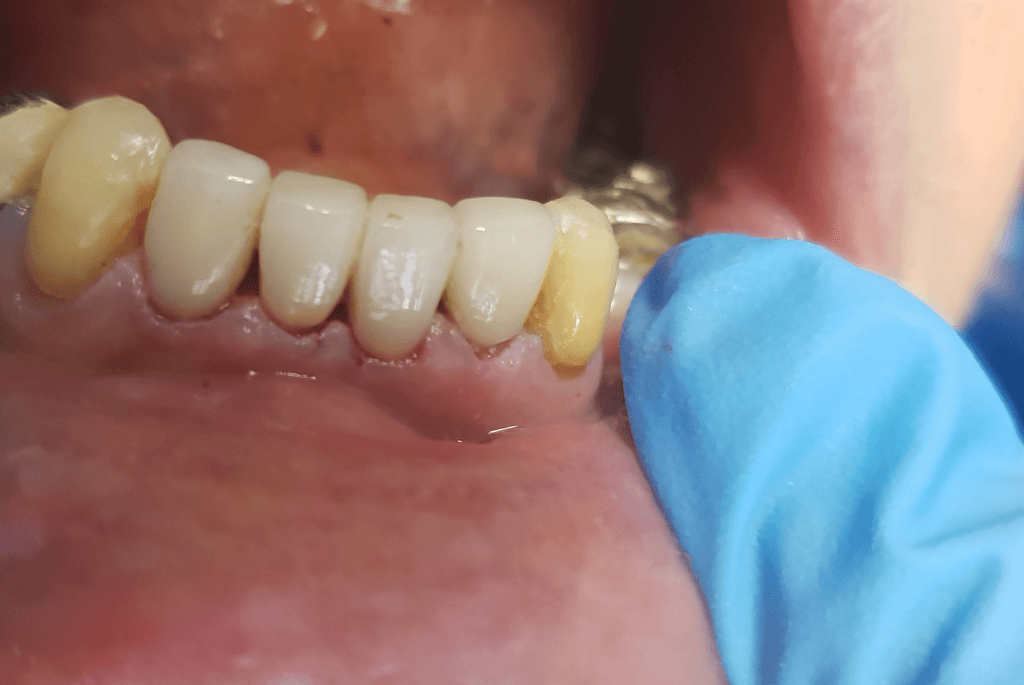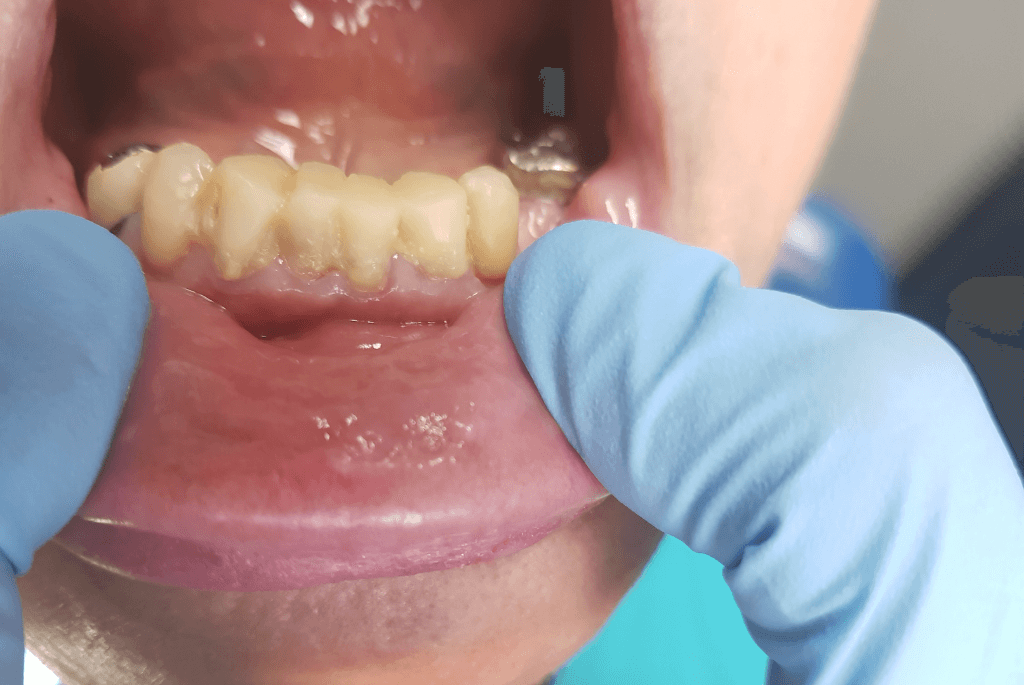Crowns

A crown is a tooth-shaped cover placed over a tooth that is badly damaged or decayed. Many people call it a cap.
Crowns may be placed for several reasons. Usually the tooth has been broken or severely damaged by decay. As a result, a filling can’t replace enough of the tooth or make the tooth strong enough. A crown may hold together parts of a cracked tooth. It also can be used to hold a bridge in place. Crowns can be used to improve appearance as well. They may be placed to cover misshapen or badly discolored teeth.
Crowns can be made ahead of time (prefabricated) or made to order in a laboratory. Prefabricated crowns are made of plastic or stainless steel. They can be used on a temporary basis until a permanent crown is made.
Crowns can be made of:
- All metal
- Zirconia
- Porcelain fused to metal (PFM)
- Porcelain fused to zirconia
- All ceramic
Metals include gold alloy, other alloys (palladium) or a base-metal alloy (nickel or chromium). The all-metal or PFM crowns are stronger and are better choices for back teeth than ceramic crowns. PFM and all-ceramic crowns are the same color as your natural teeth. They look just like normal teeth.
All crowns have advantages and disadvantages. Which type is best for you will be determined in part by your occlusion (how your teeth meet) and whether you grind your teeth. The final choice is up to you and your dentist.
Crowns usually last at least 7 years. In many cases they last much longer, up to 40 years or so. In many cases the crown is fine, but the tooth underneath it has developed a cavity. Therefore, maintaining good oral hygiene, including brushing and flossing, will help your crown last longer.
Preparing the Tooth
If you need a crown, you may also need endodontic or root canal treatment on the tooth. Not everyone who needs a crown will also need a root canal. Root canal treatment is required if the cavity is deep and reaches the pulp of the tooth, where the nerve of the tooth is located.
Before placing a crown, if not much of the tooth is remaining, your dentist may need to build up a foundation to support it. A foundation is needed if large areas of the tooth are decayed, damaged or missing. If you are receiving the crown after root canal treatment, your dentist may insert a post-and-core foundation.
To place a crown, your dentist will file down the tooth to make room for the crown. If you are receiving an all-metal crown, less of the tooth needs to be removed because these crowns can be made thinner than PFM or ceramic ones.
After filing down the tooth, there are two ways to make a permanent crown. Most crowns require two visits to the dentist. You receive a temporary crown at the first visit and wear it while your permanent crown is made. Some dentists have a machine that makes a crown in one visit.
With the traditional approach to making a crown, your dentist first will use a piece of thread or cord to push the gum away from the tooth. Then the dentist will make an impression (copy) of the tooth using a rubber-like material. The impression material sets in about five minutes. Then it is removed. Some dentists are now doing away with this traditional technique and are using digital technology to take impressions for crowns.
Your dentist will also take an impression of the teeth above or below the tooth that will receive the crown. The purpose is to make sure the crown will fit into your normal bite.
The impressions are sent to the lab, where the crown is made. During that time, you will have a temporary crown placed. These crowns are usually made of plastic. They can be made in advance by the laboratory or made by the dentist during your preparation visit. Then the dentist fits the temporary crown to your tooth.
These crowns are not meant to last for a long time. In some cases, however, a temporary crown can stay in place for a year or longer. If it needs to last longer, a lab-made plastic crown is best. It is stronger and will last longer than a temporary plastic crown that is made by the dentist.
Temporary cement is used to keep this crown in place. It is special cement that is designed to be weak. This allows your dentist to easily remove the temporary crown so your permanent crown can be placed.
At a second visit, your dentist will remove the temporary crown and test the permanent one. Sometimes crowns need more polishing or glazing or some other adjustment before they are placed. Once the crown is ready, it is permanently cemented on your tooth.
If your dentist owns a Cerac or CAD-CAM unit, a crown can be made in one visit. First, a 3D image of the prepared tooth is fed into the unit. Then a computer makes the crown from a block of porcelain. The dentist places the crown during the same visit.
One Visit Crown (CEREC)
CEREC Technology
The cavity preparation is first photographed and stored as a three dimensional digital model and proprietary software is then used to approximate the restoration shape using biogeneric comparisons to surrounding teeth. The practitioner then refines that model using 3D CAD software. When the design phase is complete, the information is sent wirelessly to the milling unit which mills the actual restoration from a solid block of material using diamond burs. The restoration is bonded to the tooth using a resin cement which bonds to both the restoration as well as the tooth itself.
CEREC Procedure
The treating dentist prepares the tooth being restored either as a crown, inlay, onlay or veneer. The tooth is then powder sprayed with a thin layer of blue anti-reflective contrast medium, imaged by a 3D imaging camera and uploaded to the CEREC computer. Using the proprietary CEREC software in various modes, a restoration can be designed to restore the tooth to its appropriate form and function. This data on this restoration is stored in a file and is sent via wireless serial transmission or direct wiring to a milling machine. The restoration can then be milled out of a solid ceramic or composite block. Milling time varies from as little as four minutes to as long as twenty depending on the complexity of the restoration and the version of the milling unit.
More people these days are looking for cosmetic dentistry. Some people feel that veneers and whitening are just things that people in the public eye need to consider but they are things which are available to everyone. The procedures can help to restore your smile to one that you are proud of and want to show off. You may not think that it is that important to have your teeth looking good, but it can make a big difference to your self-confidence if you know that you look good. You will want to talk and smile more and that will make you feel happier.
It is worth finding out more about cosmetic dentistry in Sydney to see whether it can make a difference to you. You may find that there is an easily affordable procedure that you can have done and will make a big difference to how you look and feel. Why not come and have a chat with us about your teeth and we will let you know what we can do to improve them. Lots of people are benefitting from cosmetic dentistry and you could be the next to experience the difference that it can make to your life.
Commonly Asked Questions regarding Cerec Crowns
What are CEREC crowns?
A crown is a tooth-shaped ‘cap’ that is placed over a tooth to restore its shape and size, strength, and improve its appearance.
The advantage of CEREC crowns is that teeth can be restored within a single appointment.
CEREC (Ceramic Reconstruction) is a dental restoration product produced using a variety of computer technologies. “It is easy, fast, can be made in-house to match existing teeth perfectly and very convenient, especially because you don’t have to go through messy impressions and wait 2-3 weeks with several visits to complete the process,” says Dr Johnson.
“With CEREC, teeth can be restored in a single sitting, rather than the multiple sittings required with earlier techniques.”
What can you expect?
First off, your cavity is video recorded and used as a digital model to create the CEREC crown. The information is then sent to a milling unit, which mills the actual restoration from a solid block of ceramic material. The restoration is bonded to the tooth using resin cement which bonds to both the restoration as well as the tooth itself. Milling time varies from as little as four minutes to as long as twenty depending on the complexity of the restoration and the version of the milling unit.
“It’s important for me to offer my patients the latest technologies to create both a functional and attractive smile in the shortest period as possible. A beautiful smile can makea big difference to your self confidence and no doubt will have you smiling a lot more!” says Dr Johnson.
In a Nutshell
- After consultation, a video camera captures the area to be treated (the cavity).
- The dental prosthesis is then created as a 3D model on the computer.
- Afterwards, the restoration created on the computer is subsequently milled from a ceramic block.
- Just a little while later, the finished ceramic restoration is inserted.
Advantages with CEREC
- No unpleasant impression material
- No follow-up appointment
- No bothersome temporary prosthesis
- High accuracy to the margin of restorations
- Less post-op sensitivity
- Metal free restoration
- Single visit
Before

After

